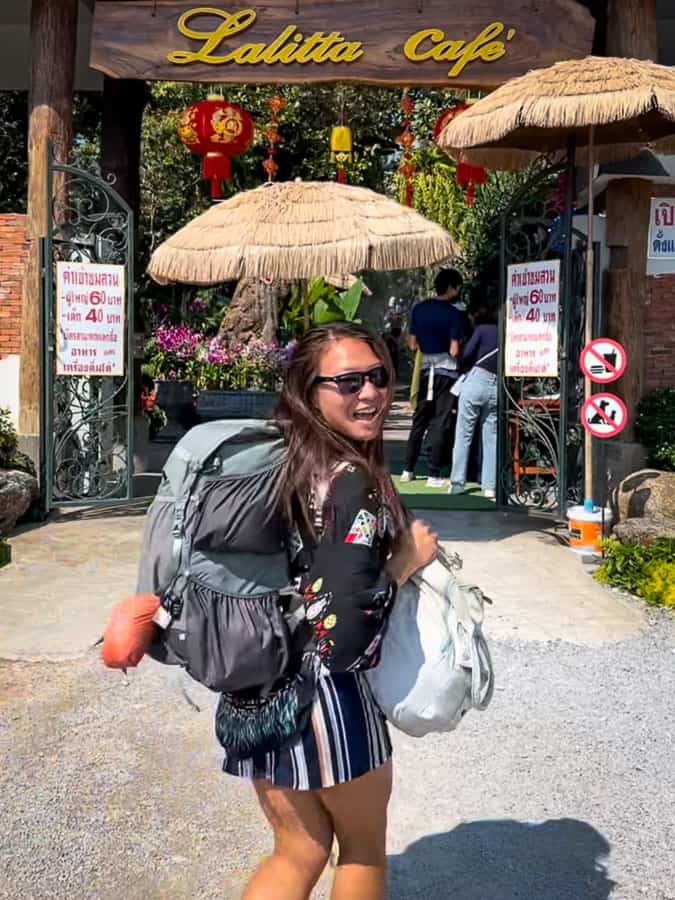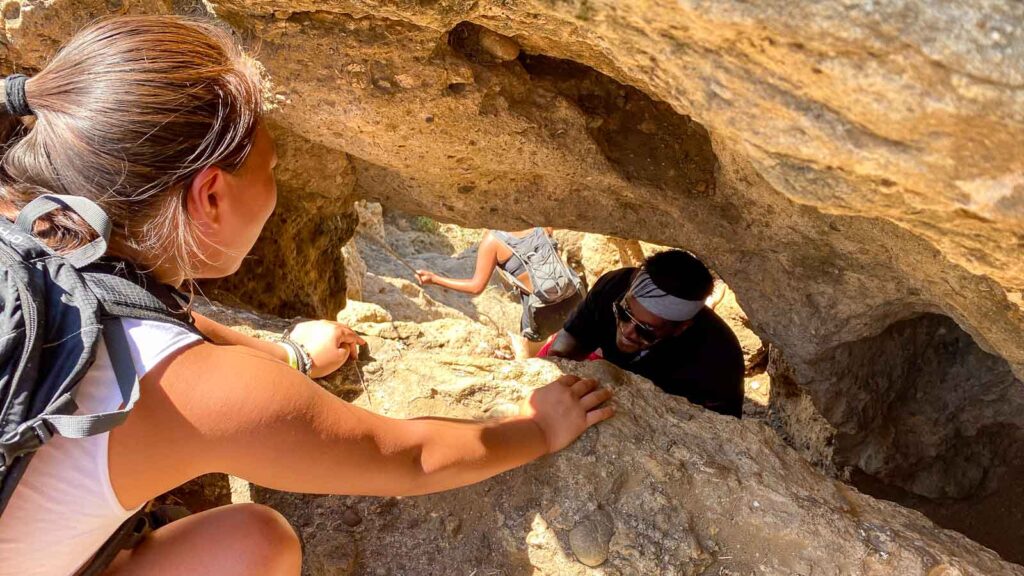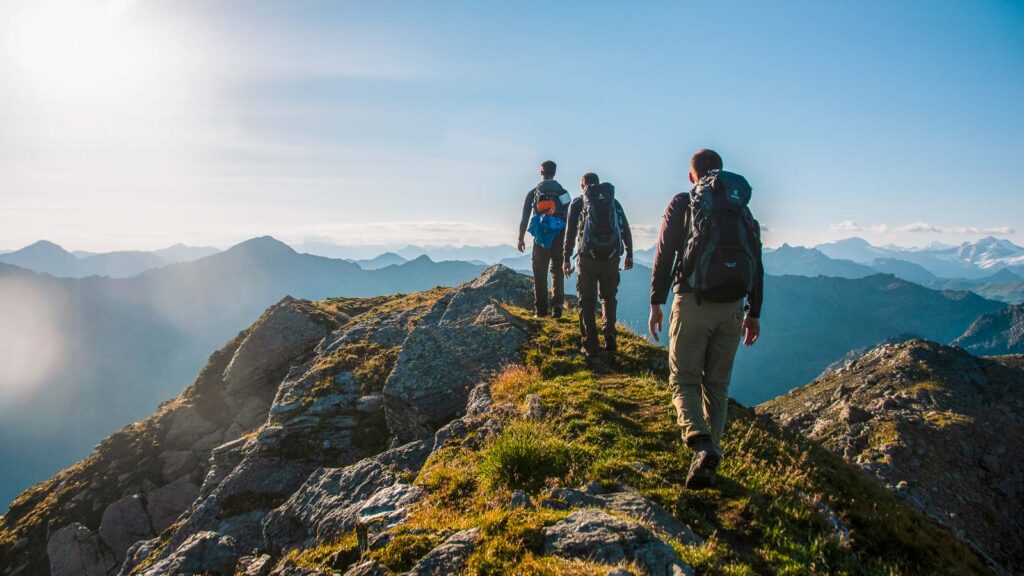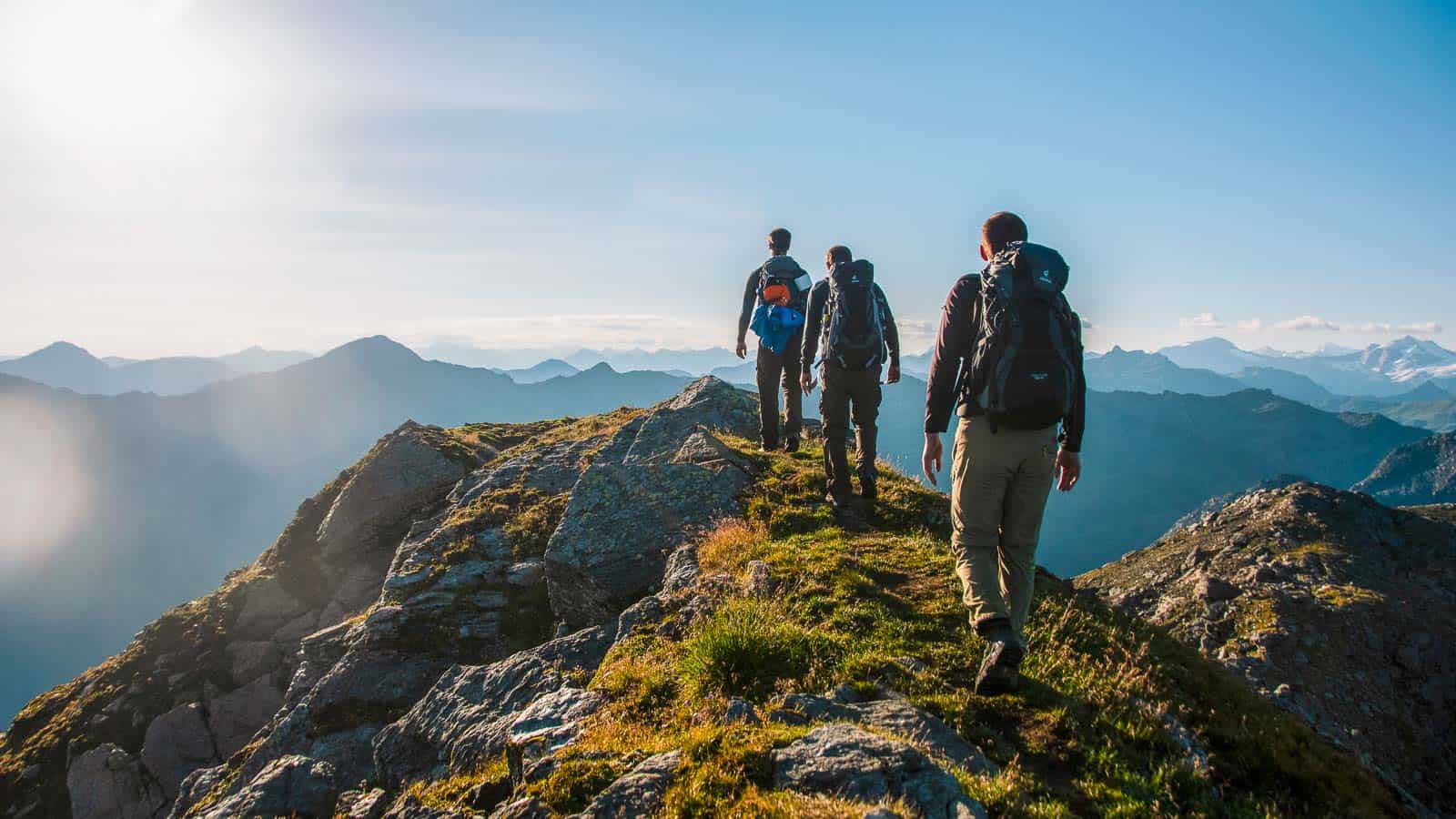How to Choose a Hiking Backpack: Your Trail-Ready Guide
There are so many options when it comes to hiking backpacks. Yes, there are different sizes, as expected, but there are also backpacks dedicated to multiple kinds of hiking.
You don’t want to get on the trail and realize you brought the wrong one. You might start down a path, and everything feels fine, but then you notice your load is too heavy for the pack, making it uncomfortable and even dangerous if you continue to use it.
This is why choosing the right one will not only save you time and money but can also save your back and hips from pain.
First off, here are the basics of hiking backpacks!

Understanding Hiking Backpack Basics
When selecting a backpack for hiking, you must consider your individual needs, the capacity required for your gear, and the type of frame that best suits your adventure. We will get into frames later, but first, let’s identify your needs for the length of time you’ll be on the trail.
Identify Your Hiking Backpack Needs
The first step in choosing the right backpack is to assess your specific needs. Consider the nature of the trips you plan on taking, whether short day hikes or extended multi-day treks.
This initial assessment largely dictates the choice between an ultralight backpack for fast and light use and a more robust pack for heavier loads.
Backpack Capacity and Volume
Backpack capacity is critical, and most manufacturers will have this in liters, which indicates the volume of gear a pack can hold. Here’s a general guide based on trip length:
- Day Hikes: 20-30L
- Overnight Trips: 30-50L
- Multi-day Packs: 50-75L
You should aim for a pack that comfortably fits all necessary gear without excessive space, which could encourage overpacking. A multi-day pack that is 50L to 75L might seem like a lot, but it will fill up fast as you plan your trip!
Types of Backpack Frames
There are two primary backpack frame types, each with advantages depending on the hiker’s load and preference:
- Internal Frame Packs: Sleek and streamlined, these are designed to keep the load stable and close to the body, which is suitable for dynamic activities. If you check out backpacking pics, most people will be using these.
- External Frame Packs: Offering good weight distribution and airflow, these packs are ideal for carrying heavy, irregular loads on well-defined trails.
Your choice between an internal or external frame will affect the pack’s comfort, control, and capacity for gear. There is a debate about internal vs. external frames, but if this is your first serious hiking backpack, just stick with the internal frames for now.

Finding the Right Fit For You
Find a pack that fits well for your body style. A well-fitted backpack will feel balanced and stable, lessening strain on your body.
Importance of Torso Length and Hip Size
A hiker’s torso length is the primary measurement to consider, not their overall height! I want to emphasize the importance of this because, as a taller person, this was my main concern the first time I purchased a backpack. You need to measure your torso.
Backpacks often come in various sizes based on the torso length, and getting this measurement correct ensures that the suspension system falls in line with the natural curve of the wearer’s back.
The hip belt also plays a vital role, supporting most of the pack’s weight. Remember, while you’re hiking, you want most of the weight of the pack on your hips, not shoulders.
The belt should sit on the hips and not slip down; an adjustable hip belt can greatly improve fit and comfort by conforming to the wearer’s waist size.
Torso Measurement Steps:
- Locate the C7 vertebra, the bony bump at the base of the neck
- Find the iliac crest, the top of the hip bones
- Measure the distance between these two points along the spine
Adjusting Straps and Belts for Comfort
Once the correct size is chosen, adjustments should be made to fine-tune the fit.
Starting with the shoulder straps, which should wrap comfortably around the shoulders without pinching.
When tightened, the load-lifter straps, located at the top of the shoulder straps, should angle back towards the pack at about 45 degrees. This will create a slight gap between the back of your shoulders and the pack.
The sternum strap (the strap across your chest) should be adjusted to prevent the shoulder straps from spreading too far apart without being constrictive.
Adjustment Tips:
- Loosen all straps before fitting the backpack.
- Once the hip belt is positioned properly, tighten it to transfer the weight off the shoulders. The hip belt might feel too high up, but this is normal and will be more comfortable once you start walking.
- Adjust the shoulder straps so the pack sits against the back without gaps.
- Use the load-lifter straps to bring the pack closer to the body and stabilize the load.
Evaluating Hiking Backpack Features
What features should you look for? This section unpacks the essentials, pocket configurations, material strength, and special attributes tailored for hiking efficiency.
Pocket Layout and Organization Options
Pocket layout plays a crucial role in accessibility and convenience on the trail. With the right pockets in the places you like, you can grab items you need quickly.
A good backpack will have a mix of compartments:
- Top lid pocket for easy access to items like maps or snacks
- Side pockets, often mesh, for water bottles or trekking poles
- A front stash pocket to quickly tuck away a windbreaker jacket
- Hip belt pockets are perfect for small items like a compass, sunscreen, or lip balm
- Soft-lined sunglasses pocket to protect your glasses
A sleeping bag compartment on the bottom of the backpack allows for easy storage and separation of nighttime gear. Organizational options for gear or having what one needs at one’s fingertips will differ between brands.
Material and Durability Concerns
The material of a backpack affects not only its durability but also the wearer’s comfort. Look for:
- Nylon or polyester for a strong yet lightweight feel
- Rip-stop fabrics to prevent tears; when tears do happen, they stop running up the fabric
- Reinforced areas that endure extra wear, such as the bottom of the pack
Also, consider if the fabric is treated with a water-resistant coating. This can come from the factory, but you can apply water-resistant spray to your gear later.
Although you shouldn’t expect a pack to be fully waterproof unless you’re using a waterproof roll-top dry bag, some resistance to light rain can protect gear inside.
Special Features for Convenience and Functionality
For the hiker who values efficiency and convenience on their trek, special features can enhance the backpacking experience:
- An integrated hydration reservoir means staying hydrated without stopping to fish out a water bottle; this will come with a hose that is secured to your shoulder strap
- Daisy chains and multiple attachment points allow for hanging gear outside the backpack
- Reflective materials for added visibility during low-light conditions
- Ventilated mesh back panels can provide airflow to reduce sweat on your back
Each feature will make hiking more comfortable, from staying hydrated to securing gear. When looking at backpacks, consider which features align with your style and needs.

Comfort and Convenience on the Trail
Hikers should look for features that promote good ventilation, proper load distribution, and easy access to necessities.
Load Distribution and Suspension
How a backpack is carried on your back determines the comfort level during a hike.
Ideal load distribution requires a capable suspension system with padded shoulder straps and a hip belt that effectively transfers weight to the hips.
Load lifters, which are adjustable straps, can fine-tune the load distribution, keeping the backpack balanced and close to your center of gravity. You can quickly grab these straps that dangle over your shoulder pads. They will move the load up or down as you adjust them for going uphill or walking down. This ensures you can carry essentials like food, a tent, a sleeping bag, and extra clothing without unnecessary strain.
- Weight Distribution: Aim to keep heavier items like a bear canister and hydration reservoir central and close to the back.
- Balance: To prevent tipping over or feeling like you are walking sideways, place gear strategically to maintain stability on uneven terrain.
Accessibility for Hiking Essentials
Hiking backpacks are designed with various pockets to store gear such as a first aid kit, food, and extra clothing.
Let’s look at some of the placements where these compartments are:
- Top-Loading Packs: These pack types are common, with a large opening at the top. They provide a space for a sleeping pad on top, under the lid (the lid is the top part that is usually removable for a quick day pack).
- Panel Access: Some feature a zippered front panel, allowing easier access to gear without digging from the top.
- External Attachments: Look for loops and straps that secure a tent or trekking poles outside the bag.
Buying Tips and Considerations
When choosing a hiking backpack, consider the nuanced differences between brands, the specific designs for women, and the importance of trying a pack before committing to the purchase.
Comparing Brands and Price Points
Gregory, Osprey, and REI are reputable brands known for their quality backpacks. Each offers a range of products from ultra-lightweight to more robust, feature-packed options. Don’t be too worried about ultra-lightweight hiking backpacks. This is an entire category by itself, not for the first-time hiker.
For the budget-conscious trailblazer, comparing the cost to the value you’ll get is important. More exotic materials will add durability but often come with a higher price.
The right balance between a durable, feature-rich pack and a cost-effective choice must align with your budget and trail needs.
Women-Specific Designs
Backpacks tailored for women are structured with a woman’s anatomy in mind, including a narrower shoulder width and adjusted hip belts. The same goes for other gear, like sleeping bags and, of course, jackets and pants.
Brands that offer women-specific backpacks often highlight this with targeted fits that can enhance comfort. The advantage of a women-specific pack is that it is designed to distribute weight more evenly and reduce strain, potentially improving the hiking experience.

Practical Advice for the Long Haul
A hiker’s backpack is their lifeline when going on a multi-day adventure. They must consider what to pack and how to maintain their backpack to withstand the journey ahead.
Packing Tips for Multi-Day Adventures
A backpacking pack for an overnight or weekend trip should include essential items organized effectively.
Packing layers is crucial, as weather can change drastically in the woods.
You should start with a packing list the night before you plan on going hiking. Use it, avoiding the temptation to overpack, which can increase the bag’s weight.
The base weight — the pack’s weight plus the weight of non-consumable items (food, fuel, etc) — should be kept as low as possible. Heavy items should be placed close to the back and centered, while frequently used items should be easily accessible.
Here is a simple guideline on how to balance a hiking backpack:
- Top: Light gear that might be needed quickly (e.g., rain jacket, first aid kit)
- Middle: Heavy gear (e.g., stove, food stash)
- Bottom: Bulky, lighter gear (e.g., sleeping bag, extra layers)
- External Pockets: Items needed frequently (e.g., map, water purifier, snacks)
Backpack Maintenance and Care
Proper maintenance and care are indispensable to ensure the durability of a hiking backpack. After each trip, you should clean your backpack and the rest of your gear.
Cleaning can be as simple as wiping it with a damp cloth. If the backpack requires a thorough cleaning, use mild soap and air-dry it away from direct sunlight. This is general advice; the manufacturer will have more instructions.
The backpack should be stored in a dry place to prevent mold and mildew. Regular checks for wear and the need for repairs can extend the backpack’s life.
Repair kits can fix common issues, such as a torn strap or a busted zipper, so carrying one during the hike is smart as it can save you from having a bad trip.
Here’s a brief guide on general care:
- Cleaning: Wipe with a damp cloth; use mild soap for deep clean
- Drying: Always air-dry; avoid direct sunlight
- Storage: Store in a dry place when not in use
- Repair: Carry a basic repair kit and routinely check for damages
Overall, start with the features and size you’ll need. If you can stretch your budget a little, higher-end hiking backpacks will give more value over their lifetime. When thinking about your pack, remember you’ll have this bag for years and depend on it when you’re in harsh conditions.
This article originally appeared on Travel Binger.
Troy De Ville
Troy De Ville is a journalist who founded Core Mountaineering. He is also an avid explorer and an advocate for sustainable outdoor practices. With years of experience traversing the globe's most challenging terrains, Troy aims to inspire and equip adventurers with the tools they need for responsible and uplifting outdoor experiences.

